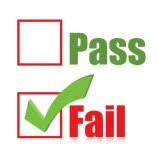To start off with this I thought about how I might be able to paint something that would use the types of colors that might have this issue with mostly white paints. And then I remembered a tutorial that I had read called Painting white and thought this is a grate two birds with one stone moment also seeing as he uses the reaper paints that I do.
And here is where the battle commences to defeat the dreaded chalk.

Ok to begin with I needed to decide what I am going to paint and as I am going to be doing this over again until I find a fix for this issue, I thought I would go back to thepractice cape that I used for Complementary underpainting Theory and trying to use the colors used in the tutorial painting white, with one color change due to the fact I was unable to find my Pure white.
So for this I decided to try using just distilled water for watering down thepaints
The colors I used for this were
Stormy Gray deep shadow
Rainy Gray shadow
Misty Graybasecoat
Linen White Highlight
Thelinen white matalic
First, I did thebasecoat
The first shadow Rainy Gray with a ratio of 1:4 paint to water.
Second shadow Rainy Gray plus part Stormy Gray with a ratio of 1:4 paint to water.
Now up until now I didn't have an issue with the paints and the dreaded chalky effect had not happened up until the first highlight glazeof
At this point I thought.

But I thought that maybe I might be able to fix this with aglaze basecoat
So in conclusion and I feel that these issues I am having are around the flesh tones or yellow whites like the linen white I came to this as my first chalky issue happened when I used fair highlight.
So the First Test was

At this point, although the two parts of the recommendations did not work I did notice as I was painting that the paper towel did leave fibers on my paintbrush and that a white hand towel maybe something to look out for in the future.
As it stands, use just water and thin layers have not helped to fix the problem, but there is still more to try. Also, it would be a boring journey if it ended so soon. And by the next time the photos I hope will improve.
List as it stands.
And here is where the battle commences to defeat the dreaded chalk.

Ok to begin with I needed to decide what I am going to paint and as I am going to be doing this over again until I find a fix for this issue, I thought I would go back to the
So for this I decided to try using just distilled water for watering down the
The colors I used for this were
Stormy Gray deep shadow
Rainy Gray shadow
Misty Gray
Linen White Highlight
The
First, I did the
The first shadow Rainy Gray with a ratio of 1:4 paint to water.
Second shadow Rainy Gray plus part Stormy Gray with a ratio of 1:4 paint to water.
Now up until now I didn't have an issue with the paints and the dreaded chalky effect had not happened up until the first highlight glaze
At this point I thought.
But I thought that maybe I might be able to fix this with a
So in conclusion and I feel that these issues I am having are around the flesh tones or yellow whites like the linen white I came to this as my first chalky issue happened when I used fair highlight.
So the First Test was
At this point, although the two parts of the recommendations did not work I did notice as I was painting that the paper towel did leave fibers on my paintbrush and that a white hand towel maybe something to look out for in the future.
As it stands, use just water and thin layers have not helped to fix the problem, but there is still more to try. Also, it would be a boring journey if it ended so soon. And by the next time the photos I hope will improve.
List as it stands.
- Almost white wash to build layers
- Thin to a whole milk consistency
Thin with water only- Shake bottle for a while
Use filtered water to thin- Halfords Batter top-up water
- Towel instead of paper towel to remove excess paint
- Allow the layers to dry before adding a new layer.
- Vallejo glazing medium to thin the paint.
Vallejo model color


.JPG)


.JPG)
Do you let your layers dry completely between each coat? If not then when you apply the next layer you are pulling up the semi dry layer underneath and adding texture. Also, always work you brush strokes in the same direction to get a consistent and smooth coat - never scrub or change direction half way or between layer, unless you want a pattern like faded cloth. Welcome to hell. Just wait until you tackle black o_O
ReplyDeleteYes to all of that. Hell is indeed here and as for the black I have a fun Tutorial to try out for that. But its all fun and if any of this helps just one person then its worth it.
ReplyDelete